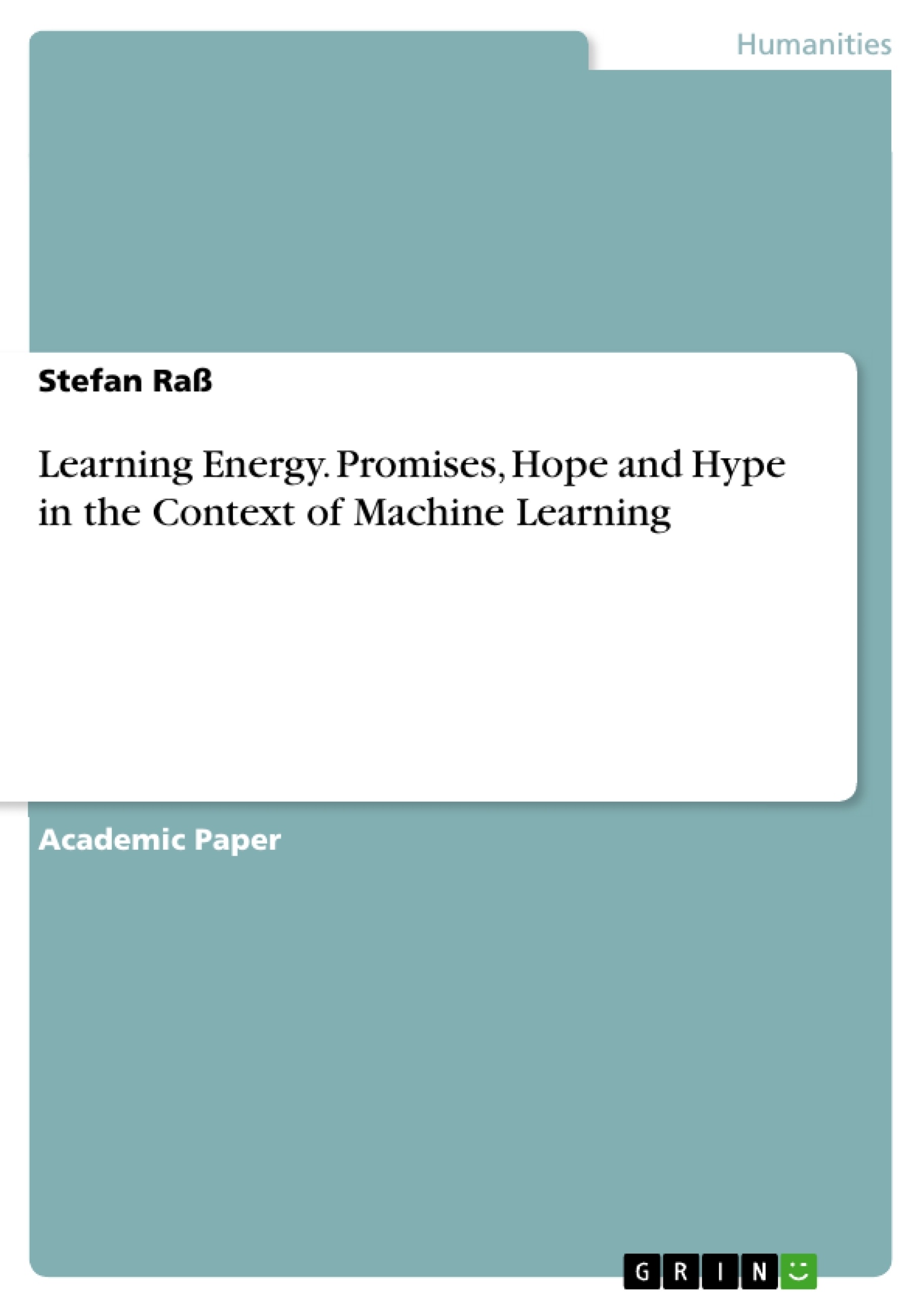The concept of ‘hype’ is widely used in the business and public sphere and serves as a way to characterize increasing expectations of developments in technological fields. This paper seeks to analyze a ‘hype in the making’ by closing in on a case at the intersection of data science and energy. Following the previous body of literature qualitative as well as quantitative indicators are taken into account in order to assess the promises, hope and hype of the optimization of datacenters through machine learning. The analysis concludes that this techonogy is nearing its peak of expectation but shows favorable signs for activities after disappointment.
Inhaltsverzeichnis (Table of Contents)
- Abstract
- Hyping Smart Energy
- The Gartner Hype Cycle
- Learning Energy
- Cycle of Hype
- Conclusion
Zielsetzung und Themenschwerpunkte (Objectives and Key Themes)
This paper examines the rising expectations surrounding machine learning in the realm of energy optimization, analyzing the promises, hopes, and hype surrounding this technology. It aims to assess the current state of this technology, using qualitative and quantitative indicators, and predict its future trajectory within the Gartner Hype Cycle.
- The concept of "hype" in technology
- The role of machine learning in energy systems
- The Gartner Hype Cycle as a framework for understanding technological development
- The potential impact of machine learning on energy efficiency and sustainability
- The importance of considering both qualitative and quantitative data in technology analysis
Zusammenfassung der Kapitel (Chapter Summaries)
- Abstract: Introduces the concept of "hype" in technology and outlines the paper's focus on analyzing machine learning's role in energy optimization.
- Hyping Smart Energy: Discusses the rise of the information society and the role of artificial intelligence (AI) in shaping our interactions and decisions. Highlights the promises and potential of AI, while acknowledging the need to consider the uncertainties associated with technological development.
- The Gartner Hype Cycle: Explains the Gartner Hype Cycle as a framework for understanding the life cycle of emerging technologies. Discusses the five phases of the Hype Cycle and the role of media attention in shaping expectations.
- Learning Energy: Explores the concept of machine learning and its potential applications in energy systems. Explains the workings of neural networks and their ability to learn from data.
Schlüsselwörter (Keywords)
Machine learning, energy optimization, hype cycle, artificial intelligence, data science, technological development, Gartner Hype Cycle, neural networks, smart energy, information society.
- Quote paper
- M.A. Stefan Raß (Author), 2020, Learning Energy. Promises, Hope and Hype in the Context of Machine Learning, Munich, GRIN Verlag, https://www.grin.com/document/1001869



